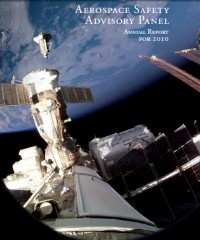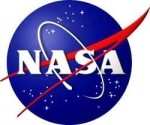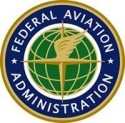Points Out Links Between Safety And Procurement
The Aerospace Safety Advisory Panel, or ASAP, has released its
2010 annual report. The panel examines NASA's safety performance
during the past year and alerts agency and government leaders to
issues and concerns.

Congress established the ASAP in 1968 after the Apollo 1 fire to
provide advice and make recommendations to the NASA administrator
on safety matters. The panel holds quarterly fact-finding and
public meetings and makes one or more visits annually to NASA
centers and related sites. This year's report advises NASA on
issues that have significant potential to impact human
spaceflight.
"The panel's first and foremost concern is the lack of clarity
and constancy of purpose among NASA, Congress, and the
administration," panel Chairman Joseph W. Dyer said. "We believe
this increases the likelihood that essential knowledge and
competencies in the contractor or government workforce, such as
those involving safety considerations, lessons learned, and past
experience will not be present to effectively reduce risk in the
future."

Some of the panel's critical safety issues or concerns in the
18-page report include:
- Human spaceflight acquisition strategy and safety
approach.
- FAA/NASA relationship.
- Workforce and safety culture.
- International Space Station challenges.
Concerning acquisition, the report states "Acquisition strategy
is PROFOUNDLY linked to safety. The principles of design and system
robustness, as well as the delicate trades among cost, schedule,
performance, and safety, are communicated to the supplier via the
request for proposal that is derived from the acquisition strategy.
Acquisition strategy articulates the design goals and optimizes
placement on a continuum between “cheapest achievable”
and “best possible.” Additionally, the strategy lays
out the success criteria and reward structure. The safety linkage
is intimate and inseparable."
The panel also urges NASA and the FAA to work together to
facilitate human spaceflight. "The potential benefits from a strong
interagency partnership are evident. NASA has been launching humans
into space for almost 50 years. At the same time, the FAA has more
than 25 years of experience in regulating commercial space launches
and 84 years (with its predecessor organizations) in regulating
commercial air travel. The challenge will be for NASA and the FAA
to avoid levying conflicting and/or unnecessarily burdensome
requirements on the launch operators while still ensuring safe
operations.

"The Panel believes that it will be very important for NASA and
the FAA to “practice” their new relationship during
cargo-delivery and vehicle-development missions over the next
several years. For example, it has already been decided that
Commercial Orbital Transportation Services (COTS) and Commercial
Resupply Services (CRS) missions will involve FAA licensing.
Advantages of this approach include the capability to use existing
processes for insurance, cross-waivers, Government indemnification
for third-party excess claims, and the FAA’s ability to take
enforcement actions, if necessary, to ensure compliance with
safety-related regulations."
The full report is available online.
 ANN's Daily Aero-Term (05.29.25): Terminal Radar Service Area
ANN's Daily Aero-Term (05.29.25): Terminal Radar Service Area ANN's Daily Aero-Term (05.30.25): Very High Frequency (VHF)
ANN's Daily Aero-Term (05.30.25): Very High Frequency (VHF) Aero-News: Quote of the Day (05.30.25)
Aero-News: Quote of the Day (05.30.25) Airborne 05.23.25: Global 8000, Qatar B747 Accepted, Aviation Merit Badge
Airborne 05.23.25: Global 8000, Qatar B747 Accepted, Aviation Merit Badge ANN's Daily Aero-Linx (05.30.25)
ANN's Daily Aero-Linx (05.30.25)





